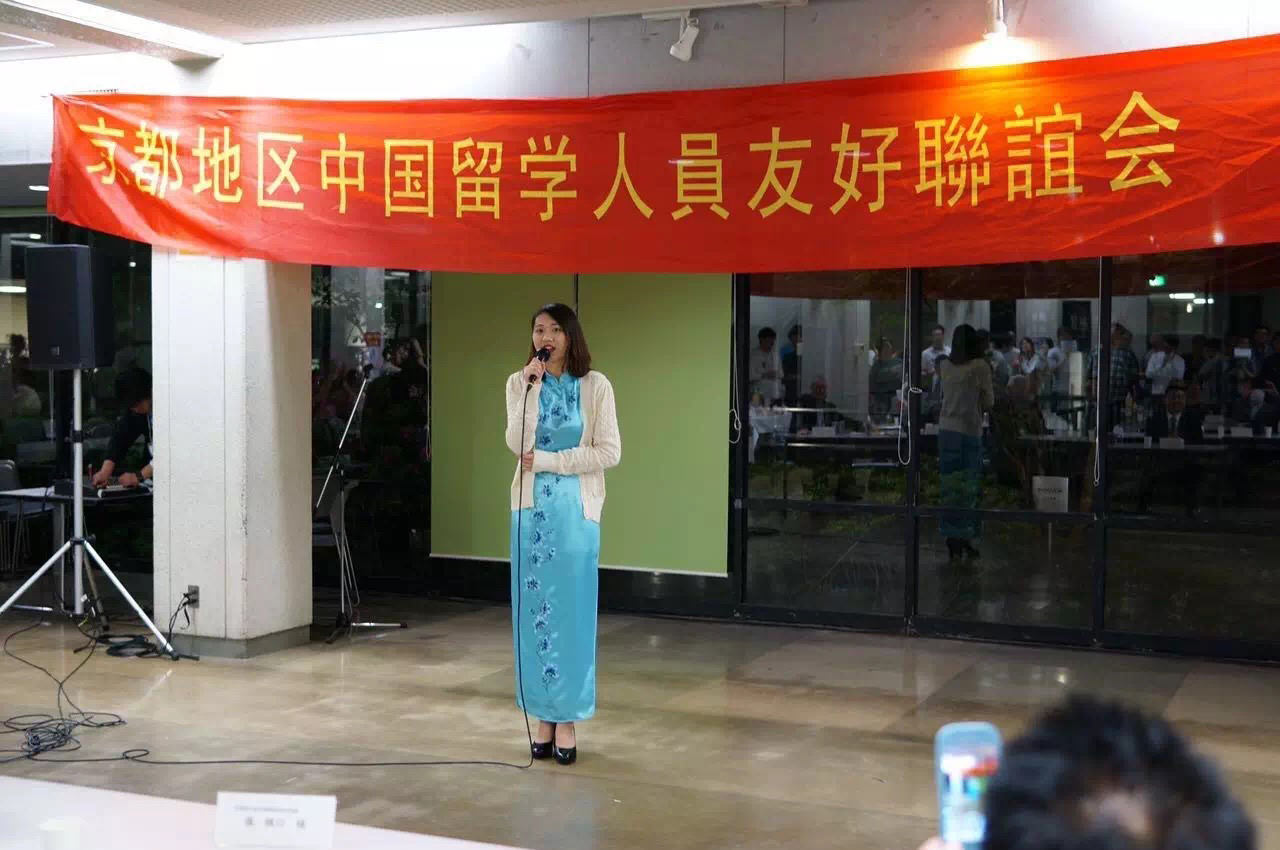The Best Nature Spots in Kyoto, According to International Students
2024.11.07
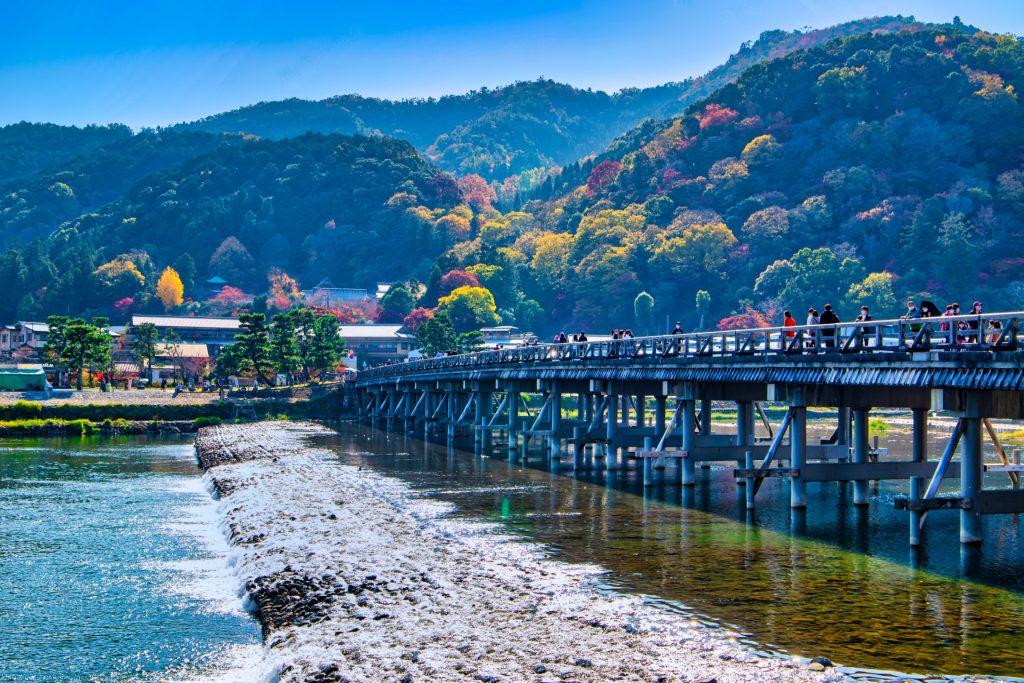
If Kyoto is famous for anything, it’s the hundreds of temples and shrines that can be found across this 2,000 year-old Japanese city. But there’s another thing you’re sure to notice as you walk around Kyoto: unlike other major Japanese cities like Osaka or Tokyo, in Kyoto you’re rarely far away from some greenery. In fact, it’s what so many students studying abroad in this historical city say they love about it: in our 2023 Kyoto Student Satisfaction Survey, over 93% of students said they were “satisfied” or “extremely satisfied” with the city’s natural surroundings–the highest satisfaction response for any of the topics we asked students about! To dig a little deeper, we recently asked students about their favorite natural spots around the city, and their favorite way to enjoy them. Let these international students give you the inside scoop on where to get a little nature therapy.
The Big Picture: What nature spots did students recommend most?
When you study abroad in Kyoto, you’re sure to find your own favorite natural spot. It may be something as simple as the lone cherry tree in that quiet corner of your neighborhood that bursts into bloom each spring–something that’s a part of just your small part of Kyoto–or maybe it’s the tapestry spread of red and orange maples across the hills of Arashiyama. One element many of the students mentioned was how easy it is to access these spots in Kyoto: as one told us, “I can be in nature in less than an hour.”
“There’s so much green,” said another, “and there’s beautiful scenery in all four seasons. Kyoto’s natural resources are really a treasure that you don’t really see in other places.”
So, which spots came out on top?
1. The Kamo River
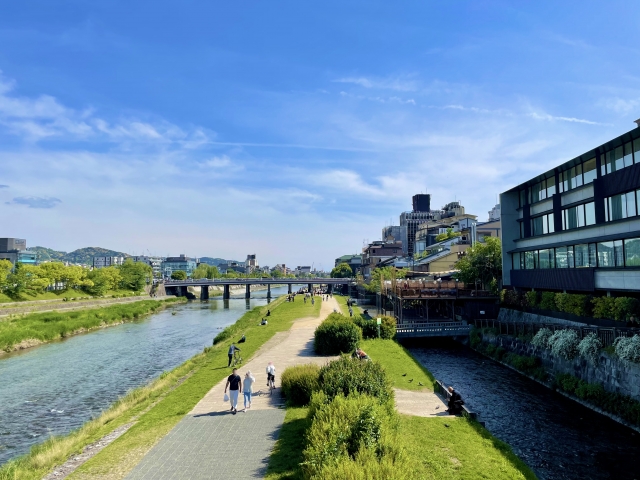
Running straight through the city of Kyoto, it’s no wonder the Kamo River ranked highest among students’ favorite spots. It’s easily accessible from downtown, and both banks feature paths for pedestrians and bicyclists. In downtown Kyoto, you’ll see couples and families strolling, picnicking, or seated on the riverbank sharing a coffee. Even in the city center, you’ll see herons and cormorants wading and fishing in the river waters.
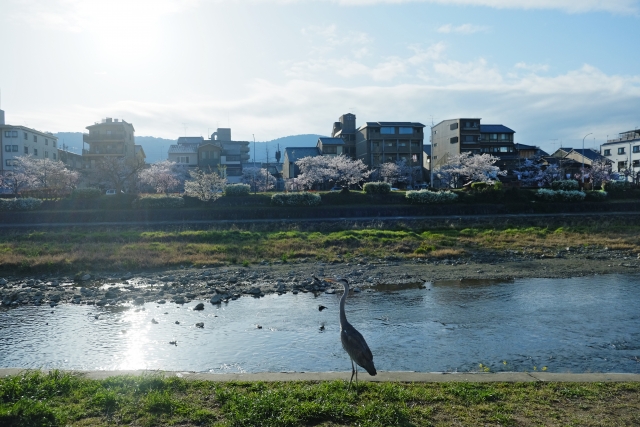
Further north, where the banks broaden, you’ll find students practicing musical instruments, and small groups playing sports or practicing dance choreography. Of course, the river delta – simply referred to as “the Delta” by student locals – where the Kamo River splits near Demachiyanagi Station, is a perennial favorite, where young children play in the shallow water, and groups of friends gather on the delta’s grassy knoll.
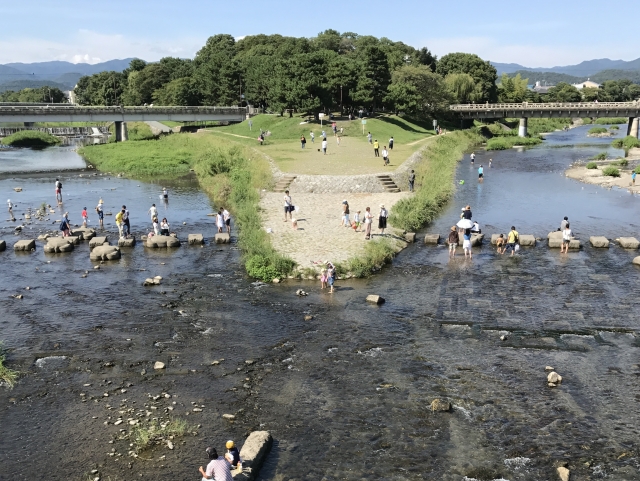
How did students say they like to enjoy the Kamo River? In much the same way: students described thow they enjoyed going for walks and picnics along the riverbank, sharing drinks and snacks with friends.
“You’ll see a lot of different animals if you walk along the Kamo River,” one told us, “and the sound of the flowing water is soothing. I think it’s really nice to go for a walk or run along the river. I have picnics there a lot, too.”
Students also told us about how the river came to represent the changing seasons in Kyoto. One told us about how “people light sparklers on the banks in the summer, which really gives it that summer feeling.” Another went on, “The great thing about the Kamo River is that it looks different in each season. The cherry blossoms bloom there in the spring, and in the summer it’s famous for the kawayuka [riverside platforms for dining] you can see as you walk along. In autumn the fall colors are beautiful, and the snowy scenery in the winter is gorgeous… There are lots of famous spots like Kiyomizu-dera Temple, Gion, and Yasaka Shrine near the Kamo River, and there are lots of restaurants, too. It’s also easily accessible on public transit: it’s within walking distance of Kyoto Station, and you can get there by subway or bus, too.”
The central location of the river was another positive point that students mentioned again and again. It’s no wonder the river is so beloved by students and other locals, because, as one student pointed out, it’s at the center of a lot of Kyoto life: “The river runs through the city center, through areas like Kawaramachi and Shijo, and connects all the way up to the mountains in the north, so anyone who lives in Kyoto can easily reach it. I think it’s the most easily accessible natural spot in Kyoto.”
2. The Philosopher's Path
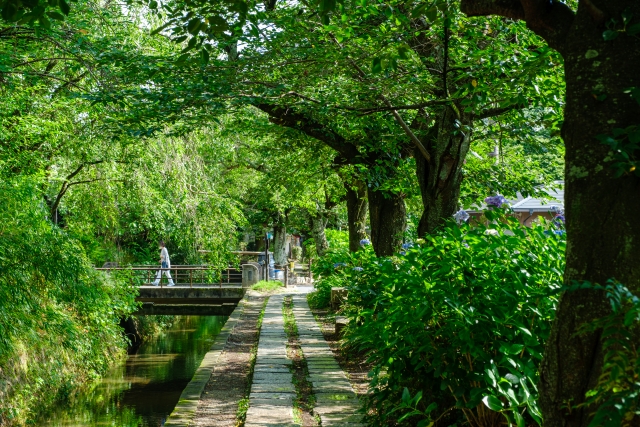
The second most popular nature spot international students selected, the Philosopher’s Path (哲学の道) is popular with tourists as well as locals, and appears in just about every Kyoto walking guide. The tree-covered walking path opened in Kyoto in the late 19th century, and follows a shallow canal between Eikan-do Temple and Ginkaku-ji Temple (also known as the Silver Pavilion).
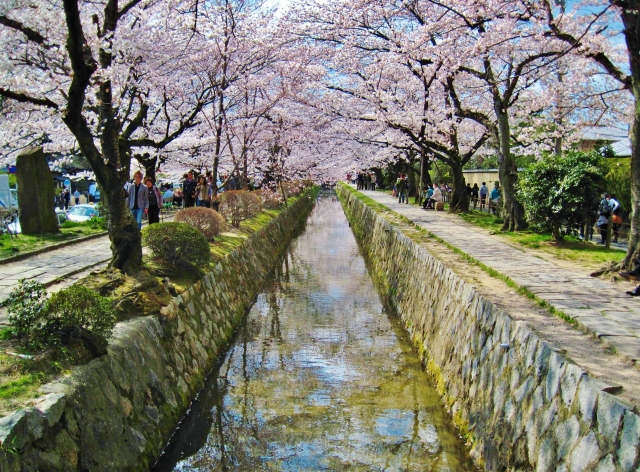
In the springtime, the cherry blossoms form a pink canopy overhead, and the fallen petals blanket the canal water, so it’s no wonder students mentioned that the Philosopher’s Path is a great place to see cherry blossoms! It’s also one of a few places that students found perfect for peaceful walks with friends, or for taking photos.
Many of Kyoto’s beautiful nature spots are not just beautiful, of course, but culturally significant places that some international students even looked forward to seeing before they arrived. “When I was studying Japanese,” one commented, “there was a reading comprehension question about the Philosopher’s Path, so I knew I just had to visit it in person while I was studying in Kyoto.”
3. Arashiyama
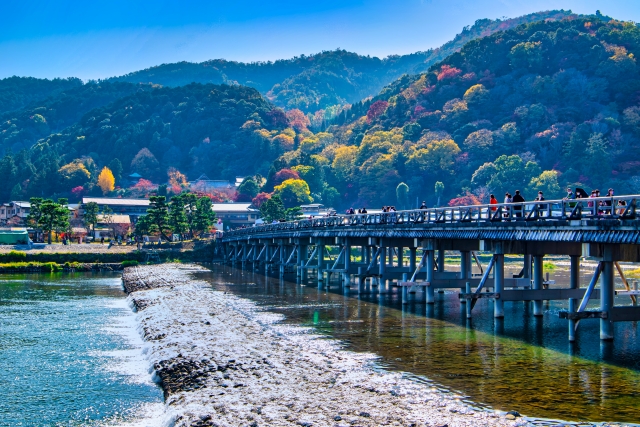
Less than an hour to the west of Kyoto by train, Arashiyama is an area’s that’s popular for sightseeing, with its famous bamboo groves, temples with beautiful grounds, and the view of the hills around the Togetsukyo Bridge, so it’s not surprising students selected it as a favorite. Arashiyama was the third most popular nature spot in Kyoto with the international students we surveyed. While you may not always have enough time to visit Arashiyama on a school day, living in Kyoto means you can beat the crowds by visiting earlier or later on your days off!
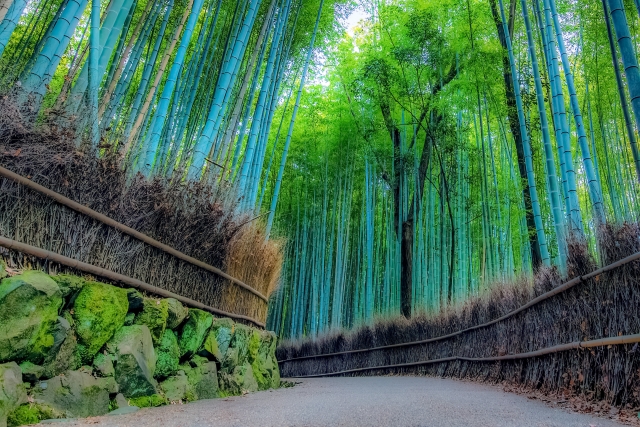
So what does a student-friendly day in Arashiyama look like? “I like to get there via Hankyu Arashiyama Station, cross the Togetsukyo Bridge, and then walk around sampling food,” one student shared (luckily, Arashiyama is reachable on both the Hankyu and JR train lines!). “You can relax with a walk through the bamboo grove, or take in the beautiful World Heritage Site gardens at Tenryu-ji Temple.”
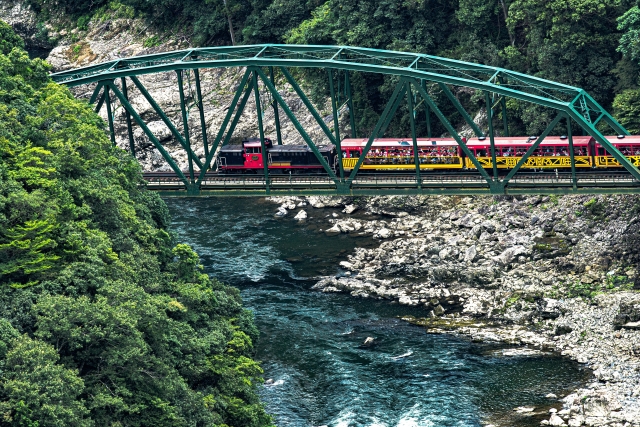
Since you’re just outside of the city, you can also get a view of nature at a larger scale. This student also recommended the Sagano Romantic Train, which travels through the dramatic vistas of the Hozukyo Gorge in Kameoka. Plus, as the student pointed out, “Arashiyama also has a lot of wonderful places to eat, like cafés with matcha foods and kaiseki restaurants. It’s within walking distance of the station[s], and you can get there by city buses, too.”
4. Kyoto Imperial Palace Grounds/Kyoto Gyoen National Garden
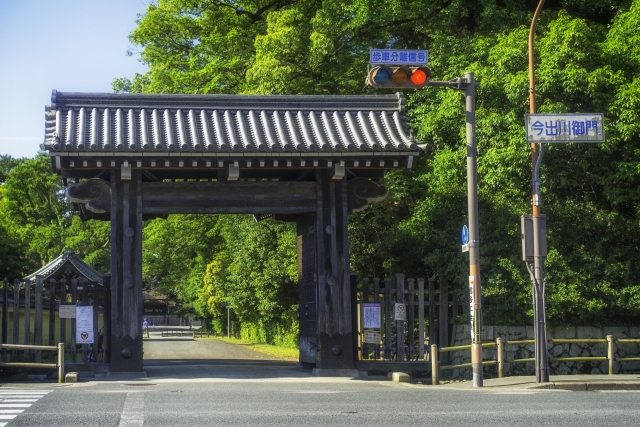
The Kyoto Imperial Palace (gosho) and its surrounding gardens (gyoen) are located north of Kyoto’s downtown area. This is an area you likely won’t find mobbed with tourists. Instead, you’ll find the large grounds–multiple city blocks worth!–filled with grass, lush trees, and many seasonal flowers and plants. Many people visit to walk through the gravel paths or sit on the grass beneath the trees. The grounds also contain the Kyoto Imperial Palace, Kyoto State Guest House, and several shrines.
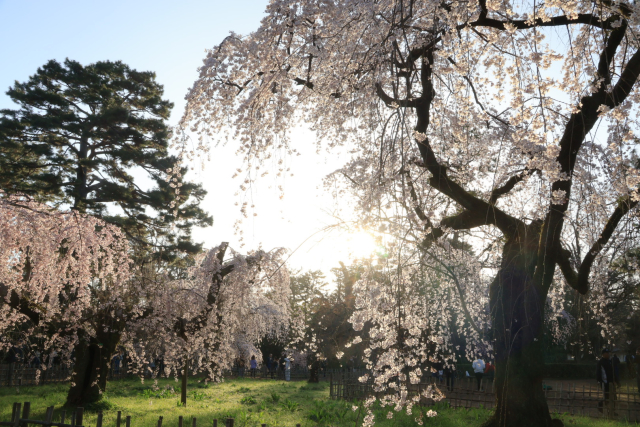
Like some of the other spots on this list, students praised the gardens for their seasonal scenery. Ease of access, of course, is another important factor, as this student commented: “The Kyoto Gyoen Imperial Gardens are close to my university, and entry is free, so I like to go there to take walks.”
You can see an English-language guide map of the Kyoto Gyoen National Garden here. You can also find more information about parking, access, and regulations here: Kyoto Gyoen National Garden [Ministry of the Environment].






